-
 bitcoin
bitcoin $116750.837634 USD
1.11% -
 ethereum
ethereum $4515.341020 USD
-0.47% -
 xrp
xrp $3.043113 USD
1.49% -
 tether
tether $1.000476 USD
0.02% -
 bnb
bnb $959.123861 USD
4.03% -
 solana
solana $236.571244 USD
0.47% -
 usd-coin
usd-coin $1.000002 USD
0.00% -
 dogecoin
dogecoin $0.269342 USD
-0.14% -
 tron
tron $0.343000 USD
-0.81% -
 cardano
cardano $0.880538 USD
1.74% -
 hyperliquid
hyperliquid $54.247044 USD
1.00% -
 chainlink
chainlink $23.521588 USD
-0.41% -
 ethena-usde
ethena-usde $1.001241 USD
0.01% -
 sui
sui $3.597422 USD
1.64% -
 avalanche
avalanche $30.081531 USD
1.20%
What does a PDI crossing above the MDI in the DMI indicator indicate?
The +DI crossing above the -DI signals bullish momentum, especially when confirmed by rising ADX and volume, helping traders spot potential uptrends in crypto markets.
Sep 16, 2025 at 03:54 am
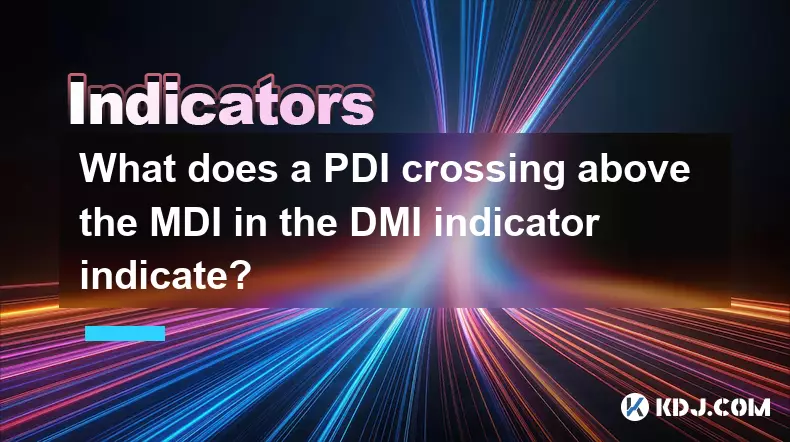
Understanding the DMI Indicator and Its Components
1. The Directional Movement Index (DMI) is a technical analysis tool used to measure the strength and direction of a price trend in financial markets, especially in cryptocurrency trading. It consists of three main components: the Positive Directional Indicator (+DI), the Negative Directional Indicator (-DI), and the Average Directional Index (ADX). The +DI reflects upward price movement, while the -DI captures downward momentum. Traders use these lines to assess whether buying or selling pressure is dominant.
2. The DMI is particularly valuable in volatile markets like the cryptocurrency space, where price swings can be abrupt and misleading. By comparing the +DI and -DI lines, traders can identify shifts in market sentiment. When the +DI crosses above the -DI, it suggests that bullish momentum is overtaking bearish pressure, potentially signaling the start of an uptrend.
3. The ADX component, while not directly involved in the +DI and -DI crossover, provides context by measuring the strength of the prevailing trend. A rising ADX above 25 typically indicates a strong trend, reinforcing the significance of a +DI/-DI crossover. Without a strong ADX, the crossover may produce false signals, especially in sideways or choppy markets.
4. In the context of digital assets, where sentiment and macroeconomic factors heavily influence price action, the DMI helps filter out noise. For instance, during a Bitcoin rally fueled by institutional adoption, a +DI crossing above the -DI could confirm the sustainability of upward momentum, especially if accompanied by increasing trading volume.
5. Traders often combine the DMI with other indicators such as moving averages or RSI to confirm signals. For example, a +DI crossing above the -DI while the price is above a 50-day moving average adds credibility to the bullish signal. This multi-indicator approach is common among experienced crypto traders aiming to reduce false entries.
Implications of +DI Crossing Above -DI
1. When the Positive Directional Indicator (+DI) crosses above the Negative Directional Indicator (-DI), it indicates a shift in momentum from bearish to bullish. This crossover is interpreted as a potential buy signal, especially when it occurs after a prolonged downtrend or consolidation phase in a cryptocurrency’s price chart.
2. In fast-moving markets like altcoin trading, this crossover can precede significant upward moves. For example, during a market recovery following a broad sell-off, a +DI crossing above the -DI across multiple altcoins might suggest a sector-wide reversal in sentiment.
3. The reliability of the signal increases when the crossover happens in conjunction with rising volume. Increased buying volume confirms that the shift in directional movement is backed by actual market participation, reducing the likelihood of a false breakout.
4. Traders often set entry points just after the crossover, placing stop-loss orders below recent swing lows to manage risk. The exact placement depends on volatility and the specific cryptocurrency’s price behavior, with more volatile assets requiring wider stop margins.
5. It’s important to note that the +DI/-DI crossover does not guarantee a sustained uptrend. In ranging markets, the indicators may cross back and forth, generating whipsaws. This is why context—such as overall market structure, volume, and broader macro trends—is essential for accurate interpretation.
Practical Applications in Crypto Trading
1. Day traders in the cryptocurrency market frequently use the DMI on 1-hour or 4-hour charts to capture short-term trend reversals. A +DI crossing above the -DI on these timeframes can signal an opportunity to enter long positions in assets like Ethereum or Solana ahead of momentum spikes.
2. Swing traders may rely on daily DMI readings to identify medium-term trend changes. For instance, if Bitcoin has been range-bound for weeks and the +DI finally crosses above the -DI with a rising ADX, it could indicate the start of a new bullish phase worth capitalizing on.
3. Some algorithmic trading bots are programmed to execute buy orders automatically when the +DI crosses above the -DI, provided other conditions like volume thresholds are met. This automation allows for rapid response to emerging trends in 24/7 crypto markets.
4. During periods of high market uncertainty—such as regulatory announcements or macroeconomic shifts—the DMI can help traders distinguish between temporary volatility and genuine trend reversals. A sustained +DI lead over -DI after such events may indicate confidence returning to the market.
5. Traders also monitor divergence between price and the DMI. If a cryptocurrency’s price makes a new low but the +DI is rising and approaches a crossover with the -DI, it may suggest weakening selling pressure and an imminent reversal.
Frequently Asked Questions
What timeframes are best for using the DMI in crypto trading?The DMI is effective across multiple timeframes. Short-term traders often use 1-hour or 4-hour charts, while investors analyzing long-term trends may refer to daily or weekly charts. The key is aligning the timeframe with the trading strategy and ensuring volume supports the signal.
Can the DMI be used for altcoins with low liquidity?Using the DMI on low-liquidity altcoins can produce unreliable signals due to price manipulation and erratic volume. It’s safer to apply the indicator to major cryptocurrencies or high-volume altcoins where price movements reflect broader market dynamics.
Does the DMI work during sideways markets?In sideways or consolidating markets, the +DI and -DI lines often cross repeatedly, leading to false signals. The ADX can help identify these conditions—when it remains below 20, the market lacks a strong trend, and DMI crossovers should be treated with caution.
How does the DMI differ from MACD in trend identification?While both indicators assess trend direction, the DMI focuses on directional movement strength and is less sensitive to price magnitude. MACD, on the other hand, measures momentum through moving average convergence and is more responsive to price changes, making it better suited for detecting momentum shifts rather than trend strength.
Disclaimer:info@kdj.com
The information provided is not trading advice. kdj.com does not assume any responsibility for any investments made based on the information provided in this article. Cryptocurrencies are highly volatile and it is highly recommended that you invest with caution after thorough research!
If you believe that the content used on this website infringes your copyright, please contact us immediately (info@kdj.com) and we will delete it promptly.
- Symbiotic, Chainlink, and Bitcoin Security: A New Era for Cross-Chain Transfers
- 2025-09-17 12:25:12
- PEPE, Litecoin, BlockDAG: Decoding the Hype and the Hardware
- 2025-09-17 08:45:15
- Decentralized Exchanges Surge: Trading Volume and Crypto Platforms in the Spotlight
- 2025-09-17 08:45:15
- DOGE ETF Buzz, BlockDAG Presale Surge, and Ondo PosRO: What's Hot in Crypto?
- 2025-09-17 08:50:01
- Bitcoin, MSTR, NAKA: Navigating the Wild Ride of Crypto Treasuries
- 2025-09-17 09:05:12
- Solana ETF Incoming? Institutional Capital Eyes $750 SOL
- 2025-09-17 09:05:12
Related knowledge
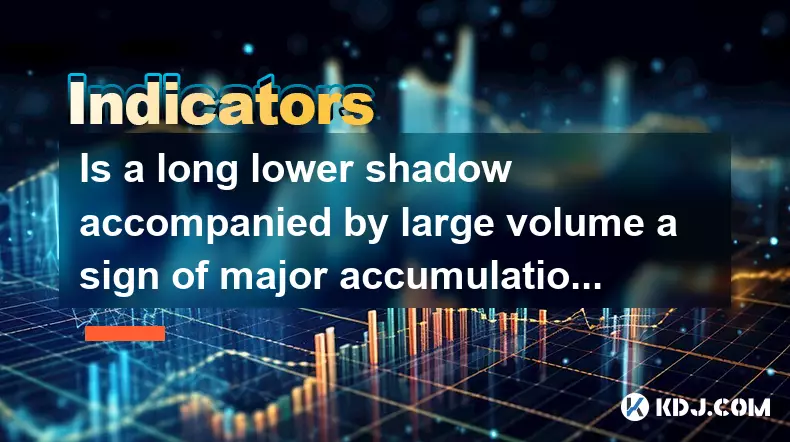
Is a long lower shadow accompanied by large volume a sign of major accumulation or selling?
Sep 17,2025 at 01:01pm
Understanding the Long Lower Shadow in Candlestick Patterns1. A long lower shadow on a candlestick chart indicates that the price dropped significantl...
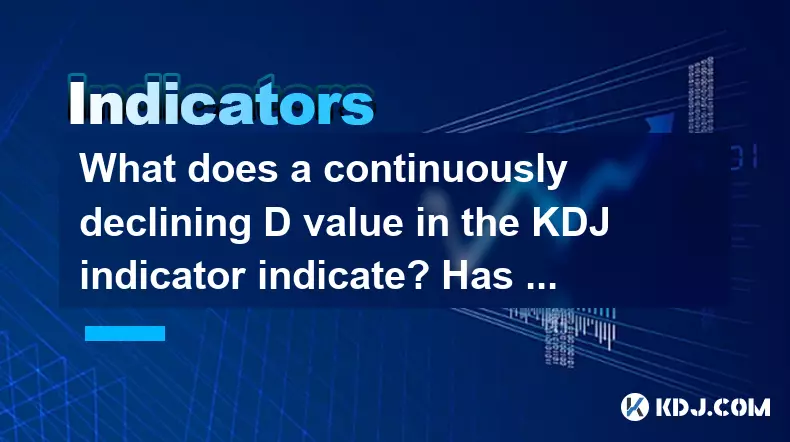
What does a continuously declining D value in the KDJ indicator indicate? Has the trend turned bearish?
Sep 17,2025 at 11:00am
Understanding the KDJ Indicator in Crypto TradingThe KDJ indicator is a momentum oscillator widely used in cryptocurrency trading to assess overbought...
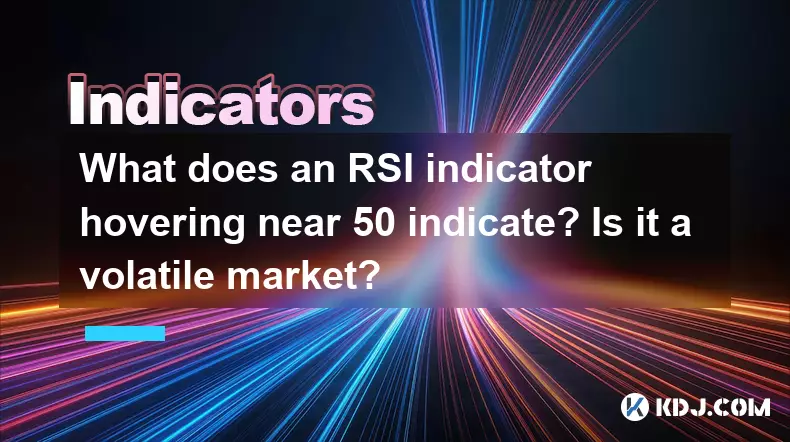
What does an RSI indicator hovering near 50 indicate? Is it a volatile market?
Sep 17,2025 at 11:54am
Understanding RSI Values Around 501. The Relative Strength Index (RSI) is a momentum oscillator widely used in cryptocurrency trading to measure the s...
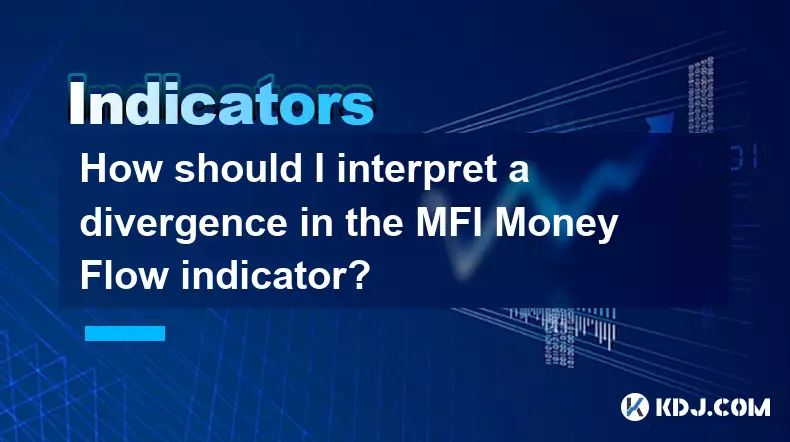
How should I interpret a divergence in the MFI Money Flow indicator?
Sep 13,2025 at 08:36pm
Understanding MFI Divergence in Cryptocurrency Trading1. The Money Flow Index (MFI) is a technical oscillator that combines price and volume to assess...
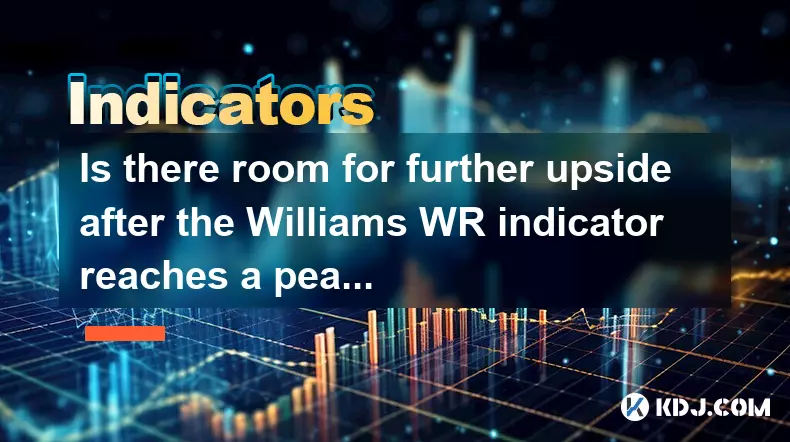
Is there room for further upside after the Williams WR indicator reaches a peak?
Sep 11,2025 at 07:36pm
Understanding the Williams %R in Crypto Markets1. The Williams %R is a momentum oscillator developed by Larry Williams to identify overbought and over...

What is the success rate of a TRIX golden cross?
Sep 11,2025 at 02:18am
Understanding the TRIX Indicator in Cryptocurrency Trading1. The TRIX (Triple Exponential Average) indicator is a momentum oscillator designed to filt...

Is a long lower shadow accompanied by large volume a sign of major accumulation or selling?
Sep 17,2025 at 01:01pm
Understanding the Long Lower Shadow in Candlestick Patterns1. A long lower shadow on a candlestick chart indicates that the price dropped significantl...

What does a continuously declining D value in the KDJ indicator indicate? Has the trend turned bearish?
Sep 17,2025 at 11:00am
Understanding the KDJ Indicator in Crypto TradingThe KDJ indicator is a momentum oscillator widely used in cryptocurrency trading to assess overbought...

What does an RSI indicator hovering near 50 indicate? Is it a volatile market?
Sep 17,2025 at 11:54am
Understanding RSI Values Around 501. The Relative Strength Index (RSI) is a momentum oscillator widely used in cryptocurrency trading to measure the s...

How should I interpret a divergence in the MFI Money Flow indicator?
Sep 13,2025 at 08:36pm
Understanding MFI Divergence in Cryptocurrency Trading1. The Money Flow Index (MFI) is a technical oscillator that combines price and volume to assess...

Is there room for further upside after the Williams WR indicator reaches a peak?
Sep 11,2025 at 07:36pm
Understanding the Williams %R in Crypto Markets1. The Williams %R is a momentum oscillator developed by Larry Williams to identify overbought and over...

What is the success rate of a TRIX golden cross?
Sep 11,2025 at 02:18am
Understanding the TRIX Indicator in Cryptocurrency Trading1. The TRIX (Triple Exponential Average) indicator is a momentum oscillator designed to filt...
See all articles
























![Web3 Crypto Market Morning News: The market rose slightly and waited for interest rate cuts in the early morning of tomorrow. Binance Alpha made another big hair. Bnb chain Meme soared, Xlayer pulled back across the board [Vic TALK Issue 1417] Web3 Crypto Market Morning News: The market rose slightly and waited for interest rate cuts in the early morning of tomorrow. Binance Alpha made another big hair. Bnb chain Meme soared, Xlayer pulled back across the board [Vic TALK Issue 1417]](/uploads/2025/09/17/cryptocurrencies-news/videos/web-crypto-market-morning-news-market-rose-waited-rate-cuts-morning-tomorrow-binance-alpha-hair-bnb-chain-meme-soared-xlayer-pulled-board-vic-talk-issue/68ca0824b9338_image_500_375.webp)
















































